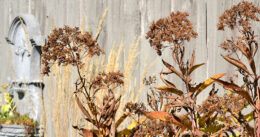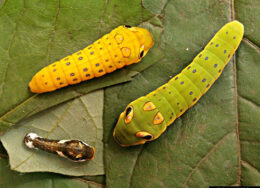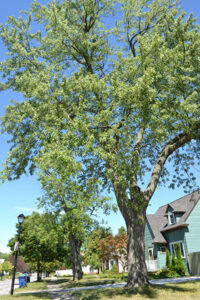by Connie Oswald Stoko Last week I published an article on “National Recycling Day is Nov. 15: What to do with electronic devices.” EeVeE from Buffalo responded with this comment: “We at Unity Buffalo’s EarthCare Animal Ministry team are considering bringing more ‘recycling awareness’ to our church and community. I am wondering if there is a program where you can have someone come to our church and give an informed guidance on how the process works and how to get…...
Tag: Environment

National Recycling Day is Nov. 15: What to do with electronic devices
by Connie Oswald Stofko If you’re reading this, you’re using an electronic device. At some point that device will be obsolete. What will you do with it then? National Recycling Day is Nov. 15, and the New York State Department of Environmental Conservation (DEC) offers two tips here on how to keep your old equipment out of a landfill. Old cell phones In New York State, you can take your old cell phone to any wireless service provider’s retail store…...

How to choose wildflower seeds, plus more tips from Erie Master Gardeners
You may be looking now for “wildflower” seed mixes to sow later in winter, wrote Peggy Koppmann in “This Month in the Garden,” an article in the newest edition of WNY Gardening Matters. Gardeners may look for wildflower seeds to create a meadow that attracts and supports pollinators, said Koppmann, a Master Gardener. But a meadow is complicated and it’s important to choose the right seeds. Purchase only seed mixtures that list the botanical names, she said. That way you…...

What to do with worn-out pumpkins
by Connie Oswald Stofko Do you think Halloween monsters are horrible? Here’s something more horrible: throwing a jack-‘o-lantern into the trash! When you’re done with your pumpkin, compost it. You can smash it, too. It’s quite entertaining! Before you place your rotting pumpkin in your compost bin, you need to get it into smaller parts so it will decompose more quickly. You could use a knife, but smashing it on a hard surface is faster, easier and more fun. Remember…...

What should you do with fallen leaves?
by Connie Oswald Stofko What happens when you rake leaves in fall? That’s what Max Ferlauto, a Maryland State entomologist, wanted to find out. In particular, he wanted to explore what happens to insects in the soil, according to this article from the College of Computer, Mathematical & Natural Sciences at the University of Maryland. Ferlauto was one of the researchers who wanted to answer this question: If you remove the leaves from a lawn in autumn, would that reduce…...

Terry Brummett, winner in Celebrity Level drawing, shows her garden
by Connie Oswald Stofko Although this garden isn’t particularly large, it appears spacious because of the many plants and decorative items throughout the area. I had the pleasure to visit the landscape of Terry and Mike Brummett in July. Terry was one of the two winners in our Celebrity Level drawing earlier this year, and I enjoyed what they have created. Tip: If you want a chance of being featured in Buffalo-NiagaraGardening.com next year, sign up for the Celebrity Level…....

Diggin In newsletter: resilience
The October edition of Diggin In newsletter includes an essay on resilience in gardening, an introduction into galls and a garden checklist. Diggin In is published by the Master Gardeners in Cornell Cooperative Extension in Orleans County. by Lydia Fernandez, Master Gardener Volunteer As gardeners, one of the most important things we grow is resilience. Season after season, we learn, we adapt and we try again. Whether we see ourselves as optimists or pessimists in life, we are hopeful in…...
Dates have changed for water testing in Cattaraugus County
Cornell Cooperative Extension offers home and water testing services through Lozier Environmental Consulting. Water testing services have been moved from weekly to monthly pickup. This will continue through autumn and winter. Water samples will now be processed on the first Tuesday of each month. Water samples need to be at the Cooperative Extension office, 28 Parkside Dr., Ellicottville, by 9 a.m. that day. Water testing kits are available for pickup in the Cooperative Extension Cattaraugus office during business hours of 9…...

Sassafras & spicebush trees are at risk; how you can help
Two native species of trees, sassafras and spicebush, are at risk of an invasive fungal disease called laurel wilt. The disease has been detected on Long Island. It’s the first detection of the disease in New York State. Note: Mountain laurel, despite its name, is not in the same family and isn’t impacted by the disease. Also, spicebush is relatively small; it can be grouped as a shrub or as a small tree. The groups working on this are: Why we don’t want…...

Have you been sweltering this summer? Plant a tree this autumn!
Was your house roasting during the 80- and 90-degree days? Did your energy bill go sky high? Take this tip from the New York State Department of Environmental Conservation: Plant a tree. Once it grows tall enough, a tree placed on the west or northwest side of a house can provide critical shade during the hottest times of day. This lowers the temperature inside the house and can reduce your cooling bill by up to 35 percent! To bring energy savings…...


